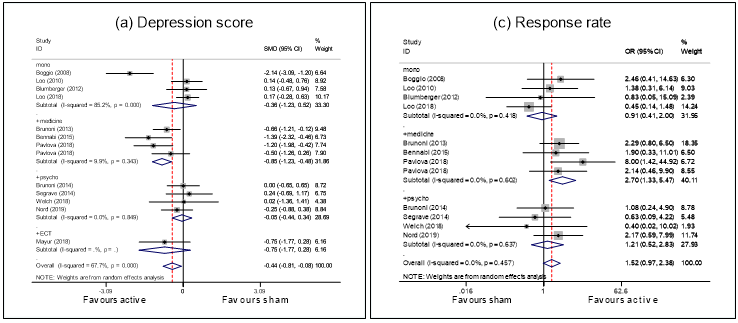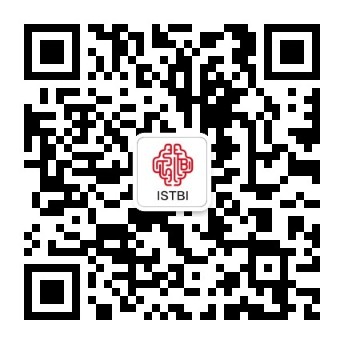Major depressive disorder (MDD) is a common illness worldwide, with more than 264 million people affected. Although there are effective pharmacological and physical treatments for MDD, about 50% of patients show an inadequate response to an individual antidepressant trial, about 25.5% show no response to electroconvulsive therapy, and 15.5%-69% show insufficient response to repetitive transcranial magnetic stimulation. Moreover, about 10% of patients become chronic (i.e., 2 years without clinical remission) and experience severe and cognitive impairment as well as psychosocial disability. Therefore, there is clearly a need to consider other possible treatments for MDD, and to consider what combined treatment might increase the efficacy of pharmacological treatment.
Recent ten years, the exploratory efficacy of transcranial direct current stimulation (tDCS) has been tested widely for the treatment of MDD. Both clinical trials and systematic reviews with meta-analyses have shown that the efficacy of tDCS is controversial, that is, both effective and ineffective results have been found.
By observing the previous RCTs of tDCS on dorsolateral prefrontal cortex (dlPFC), wefound that tDCS is often used in addition to other treatments in clinical practice, such as medication, psychotherapy, or electroconvulsive therapy (ECT). Such combination therapies could be either an influencing factor to decrease the treatment efficacy or a potential approach to improve the efficacy of treatment for major depression. Treatment strategy probably is the crucial factor that can be used to optimize the treatment of MDD.
By meta-analysis and subgroup analysis, treatment strategy has been proved that is a crucial factor influences MDD’ prognosis (Figure 1).Different treatment strategies (include tDCS monotherapy, tDCS combines with medication, tDCS combines with psychotherapy, and tDCS combines with ECT) have significant efficacies on depression score, dropout rate, response rate, and remission rate.Especially, tDCS combines with selective serotonin reuptake inhibitors(SSRIs) performed better than other therapies.Compared with sham group, tDCS combines with SSRIs has a significant lower depressive score (11.11 vs. 15.08,tDCS + SSRIs vs. Sham,p< 0.001) with a high effect size (Hedges’g=-0.86). Moreover, tDCS + SSRIs has a higher response rate (58.8%vs. 40.2%,tDCS + SSRIs vs. Sham,p =0.007,Odd Ratio= 2.9) (Figure 1).

Figure 1. The severity (a) and response rate (b) for each therapy strategy
Further investigation of tDCS + medication therapy shows:
1.Both tDCS+SSRIs and tDCS+multiple medications showed positive effects on treating MDD (Figure 2a),which indicated that tDCS + medication therapy is an optimized combination therapy.
2.Combining tDCS and SSRIs holds promise for optimal efficacy for unipolar depression, with significantly greater improvement(50.5% vs. 19.4 %,tDCS + SSRIs vs. tDCS + multiple medications,p = 0.007,Figure 2b)and response rate(58.8% vs. 26.3%,tDCS + SSRIs vs. tDCS + multiple medications,p = 0.042,Figure 2c) thantDCS +multiplemedications.

Figure 2. tDCS+SSRIs or multiple medications have better efficacies than sham stimulation (a),tDCS+SSRIs has greater improvement (**, p<0.01) (b)and higher response rate than tDCS + multiple medications (*, p<0.05) (c).
SSRIsand SNRIs is commonlyused for treating MDD in clinical, but more than a half patients cannot benefit from it.Our finding is not only encouraging for clinical practice, as patients are thus not required to withdraw antidepressant use during tDCS treatment, but also plausible, as several other neuromodulation therapies require simultaneous medication intake, such as deep brain stimulation for Parkinson’s disease. In future, it would be important and valuable to further confirm the effects of a combination of tDCS and SSRIs with meticulously designed, large-scale multi-center RCT studies.
The above results havebeen published as a journal article “Is Transcranial Direct Current Stimulation, Alone or in Combination with Antidepressant Medications or Psychotherapies, Effective in Treating Major Depressive Disorder? — A Systematic Review and Meta-analysis”inBMC Medicine. Our postdoc Wang Jingying is the first author, and her advisor Wang Shouyan is the corresponding author.
Original link:
Jingying Wang, et al. Is Transcranial Direct CurrentStimulation, Alone or in Combination with Antidepressant Medications orPsychotherapies, Effective in Treating Major Depressive Disorder? — ASystematic Review and Meta-analysis. BMC Medicine, 2021,
DOI. 10.1186/s12916-021-02181-4

